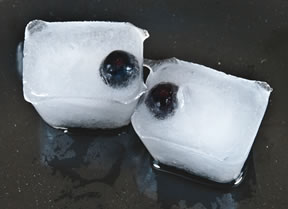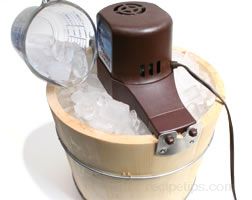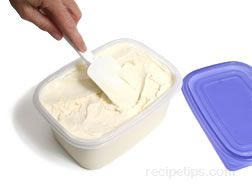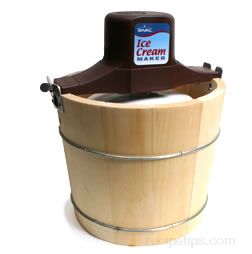To produce dry ice, carbon dioxide gas is compressed into a liquid form, which also removes excess heat. The gas will liquefy at a pressure of approximately 870 pounds per square inch at room temperature. The liquid carbon dioxide is than allowed to quickly expand by sending it through an expansion valve and into an empty chamber. This expansion causes the temperature to drop, causing some of the carbon dioxide gas to freeze and creating a snow like substance. The snow is then compressed into dry ice or extruded into various sized pellets.
Dry ice machines are available in all sizes. The machines use liquid carbon dioxide gas. Hand held machines create soft dry ice that dissipates rapidly. Commercial machines are hydraulic and able to compress the dry snow with up to 60 tons of pressure, creating very large blocks in a short amount of time.
Dry ice used for cooling, producing fog for special effects, cleaning, cloud seeding, food preservation and any unusual situations that require the production of carbon dioxide gas. Carbon dioxide is the gas that is added to water to make soda water.
Dry ice for cooling:
Dry ice should be used to keep foods cool in a refrigerator and freezer if a power outage is expected to last for hours. During a power outage, a refrigerator will keep food at a safe temperature for no more than 4 hours, 1 day for a half full freezer and 2 days for a full freezer.
Dry ice must be wrapped in newspaper or other similar material and should not
come in direct contact with skin or food.
In the freezer, dry ice should be placed on top of the food items. However,
do not allow the dry ice to come in contact with your hands, food, or liner
of the freezer. Be sure to wrap dry ice in several layers of newspaper or ask
your dry ice distributor to provide a safe alternative. Another option is to
place a board above the food items and placing the dry ice on top of the board.
In the refrigerator, dry ice should be placed below the food items. Again, do not allow the dry ice to come in contact with your hands, food, or liner of the refrigerator. Be sure to wrap dry ice in several layers of newspaper or ask your dry ice distributor to provide a safe alternative. Block "wet" ice may be more appropriate for refrigerated items. Perishables such as milk are apt to completely freeze within a short time if you use dry ice.
The following table outlines the amount of dry ice you will need for your freezer
and the number of days the dry ice should keep your food safe. Upright freezers
require a block of ice per shelf.
|
25 lbs.
|
10 cubic full freezer
|
3 to 4 days
|
|
25 lbs.
|
10 cubic 1/2 full freezer
|
2 to 3 days
|
|
50 to 100 lbs.
|
18 cubic full freezer
|
2 days
|
|
50 to 100 lbs.
|
18 cubic 1/2 full freezer
|
Less than 2 days
|
Gases from dry ice need a place to escape, open windows and/or doors to allow gas to
vent.
Safe Use:
- Do not eat dry ice.
- Do not put dry ice in an air tight container. The dry ice will explode.
- Do not breathe the steam from dry ice if you are not in a well ventilated area.
- Protect exposed skin from directly touching dry ice. Severe frostbite or burns on the skin will develop if you do not handle dry ice appropriately.
- Do not allow dry ice to come in contact with food. It is best to place several layers of cardboard or newspaper between the dry ice and food.
- When using dry ice in a freezer, refrigerator, or cooler, step back when
opening the door. This will allow dangerous vapors to escape.
















